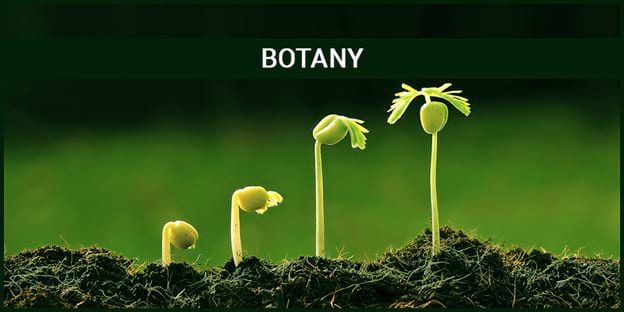This pivotal chapter illuminates the remarkable process by which plants convert light energy into chemical energy. Students explore the light-dependent and light-independent reactions in detail, examining chloroplast structure, pigment systems, electron transport chains, and the Calvin cycle. We investigate factors affecting photosynthetic rates and photorespiration, along with adaptations like C4 and CAM photosynthesis that enhance carbon fixation efficiency in challenging environments. Through understanding this fundamental process, students recognize photosynthesis as the energetic foundation supporting nearly all life on Earth.
CHAPTER 9: PHOTOSYNTHESIS IN HIGHER PLANTS
Introduction
Photosynthesis is the process by which green plants, algae, and certain bacteria convert light energy into chemical energy, producing glucose and oxygen from carbon dioxide and water. This process is fundamental for life on Earth as it provides organic compounds and energy for most living organisms and releases oxygen into the atmosphere.
Basic Equation
6CO₂ + 12H₂O + Light Energy → C₆H₁₂O₆ + 6O₂ + 6H₂O
Site of Photosynthesis
- Chloroplasts: Double-membrane organelles containing thylakoids arranged in stacks called grana
- Structure: Outer membrane, inner membrane, intermembrane space, stroma, thylakoids, grana
- Distribution: Most abundant in mesophyll cells of leaves
Pigments Involved
- Chlorophylls:
- Chlorophyll a (primary pigment, blue-green)
- Chlorophyll b (accessory pigment, yellow-green)
- Carotenoids:
- Carotenes (orange)
- Xanthophylls (yellow)
- Phycobilins (in algae):
- Phycoerythrin (red)
- Phycocyanin (blue)
Light Reaction (Photochemical Phase)
- Occurs in thylakoid membranes
- Photosystem I (P700):
- Absorbs light of 700 nm wavelength
- Produces NADPH
- Photosystem II (P680):
- Absorbs light of 680 nm wavelength
- Responsible for photolysis of water (splitting water molecules)
- Process:
- Light excites electrons in chlorophyll
- Excited electrons move through electron transport chain
- Water is split, releasing oxygen (photolysis)
- ATP is generated (photophosphorylation)
- NADP⁺ is reduced to NADPH
Dark Reaction (Biosynthetic Phase)
- Also known as Calvin Cycle or C₃ pathway
- Occurs in the stroma of chloroplasts
- Does not directly require light
- Steps:
- Carbon Fixation: CO₂ combines with RuBP (5C) to form 2 molecules of 3-PGA (3C)
- Reduction: 3-PGA is reduced to G3P (3C) using ATP and NADPH
- Regeneration: Some G3P is used to regenerate RuBP using ATP
Photorespiration
- Oxygen competes with carbon dioxide for the active site of RuBisCO enzyme
- Results in reduced photosynthetic efficiency
- Significant in hot, dry, bright conditions when stomata close
C₄ Pathway
- Adaptation to reduce photorespiration
- Initial CO₂ fixation occurs in mesophyll cells forming oxaloacetate (4C)
- CO₂ is released in bundle sheath cells for the Calvin cycle
- Examples: Maize, sugarcane, sorghum
CAM Pathway
- Adaptation for arid conditions
- Stomata open at night and close during day
- CO₂ is fixed at night as organic acids
- During the day, CO₂ is released internally for the Calvin cycle
- Examples: Cacti, pineapple, succulents
Factors Affecting Photosynthesis
- Light (intensity, duration, quality)
- CO₂ concentration
- Temperature (optimum range 25-35°C)
- Water availability
- Mineral nutrition
- Leaf age and anatomy
Significance of Photosynthesis
- Production of food for all heterotrophs
- Oxygen release into atmosphere
- Carbon dioxide utilization, reducing greenhouse effect
- Forms the basis of all food chains and food webs
- Source of biomass for biofuels
Complete Chapter-wise Hsslive Plus One Botany Notes
Our HSSLive Plus One Botany Notes cover all chapters with key focus areas to help you organize your study effectively:
- Chapter 1 Biological Classification Notes
- Chapter 2 Plant Kingdom Notes
- Chapter 3 Morphology of Flowering Plants Notes
- Chapter 4 Anatomy of Flowering Plants Notes
- Chapter 5 Cell: The Unit of Life Notes
- Chapter 6 Cell Cycle and Cell Division Notes
- Chapter 7 Transport in Plants Notes
- Chapter 8 Mineral Nutrition Notes
- Chapter 9 Photosynthesis in Higher Plants Notes
- Chapter 10 Respiration in Plants Notes
- Chapter 11 Plant Growth and Development Notes
